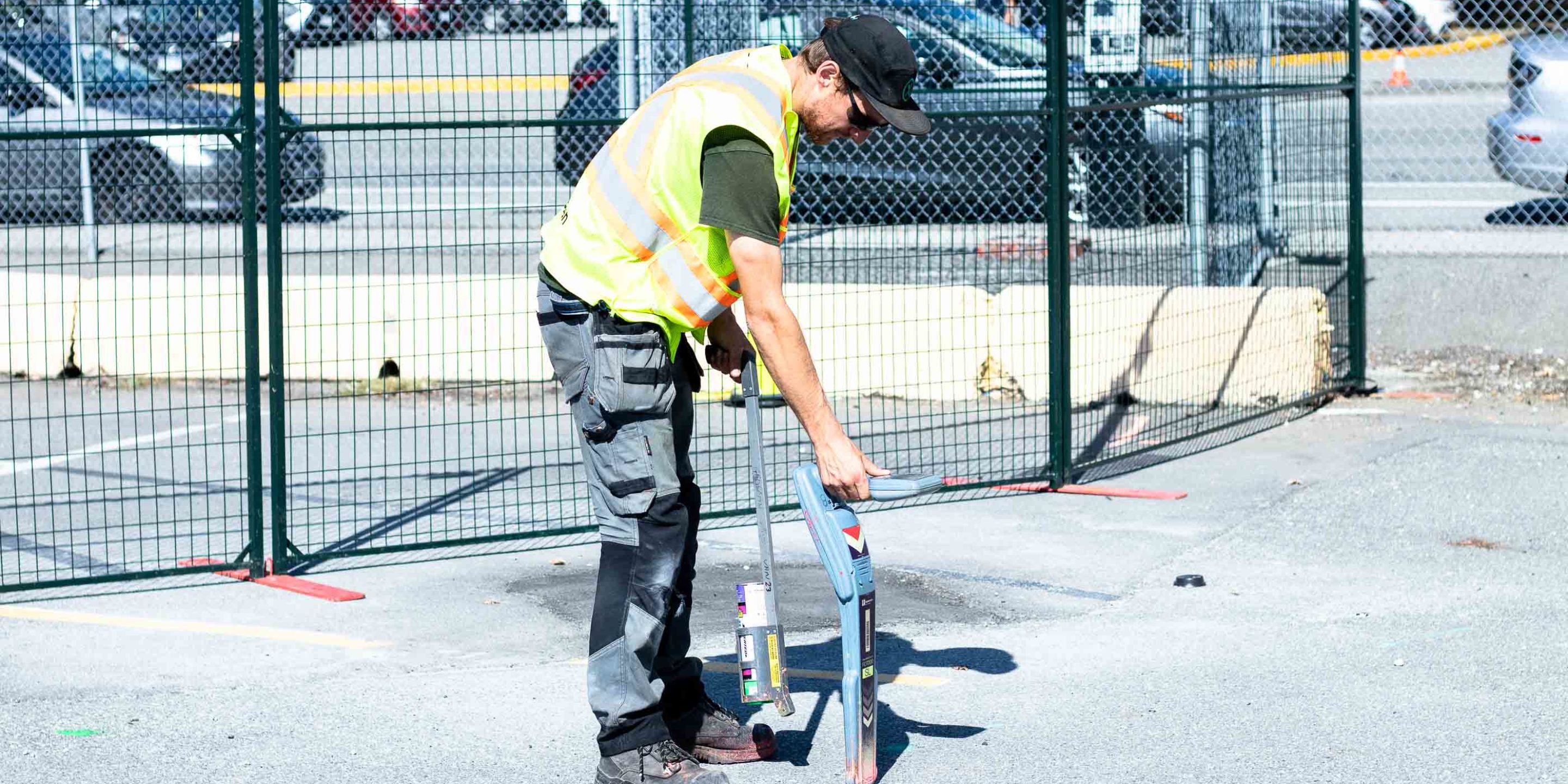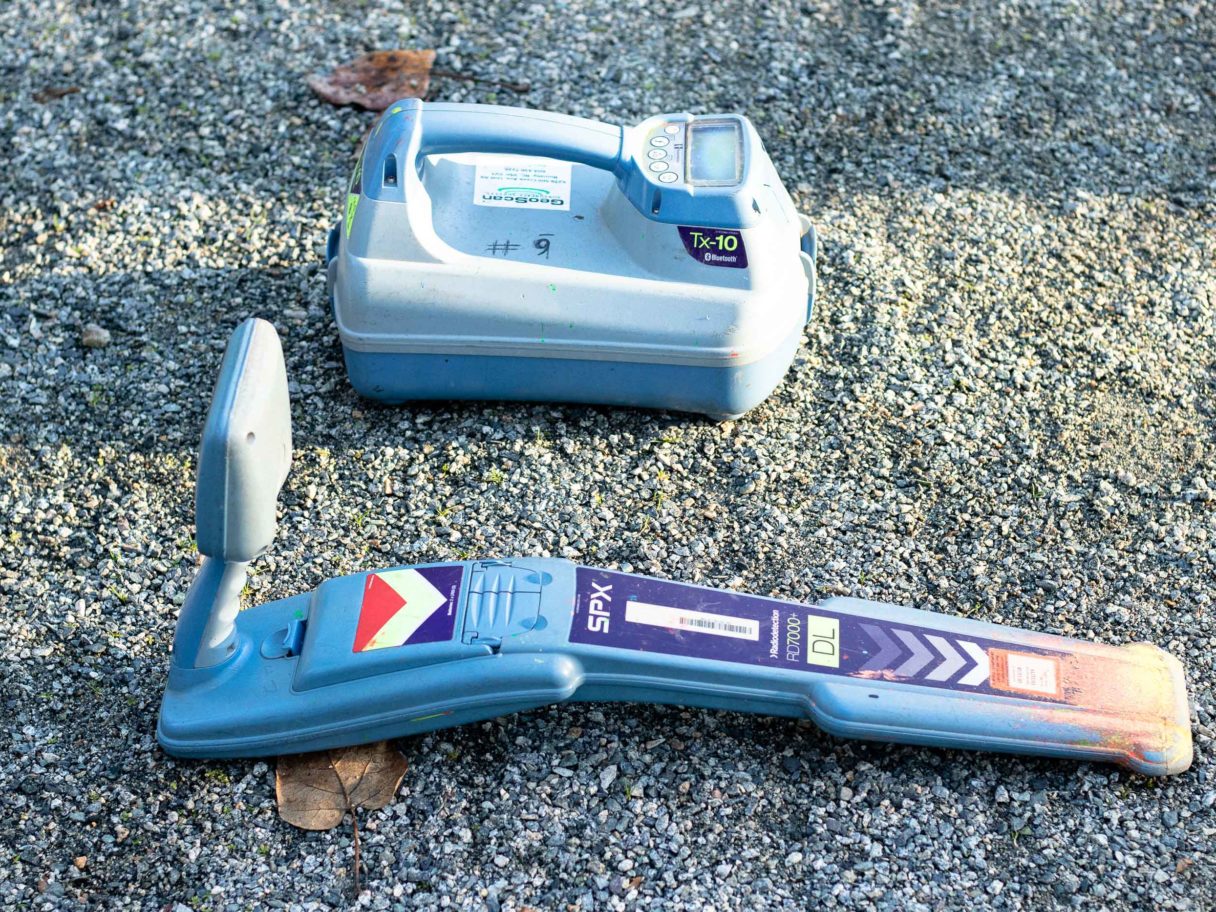
Passive and direct locating of buried pipes and related infrastructure.
Electromagnetic locating is a very versatile method of locating underground civil infrastructure. It is used by GeoScan technicians daily as a primary locating tool. It stands out as it has the ability to isolate specific pipes with a direct connection, giving the technician confidence in what pipe is being located.

How it Works
Direct connection (such as a gas line by way of the tracer wire) is the best way of using an Electromagnetic locator. This requires physical access to the pipe or service, usually by way of a surface feature that is connected to the pipe (such as a valve, a conduit ‘dropping’ off the side of a house, or an exposed pipe). Passive locating with EM locators can also be performed. Passively detecting utilities involves services that emit a frequency naturally (such as high voltage electrical cables which emit a frequency of 60hz in North America). The best signals are obtained from direct connections where physical access to the pipe is necessary.
Applications
Electromagnetic locating is used across a range of our services.
- Utility locating
- Oil tank locating
- Concrete Scanning - to assist in locating high voltage cables embedded in slabs